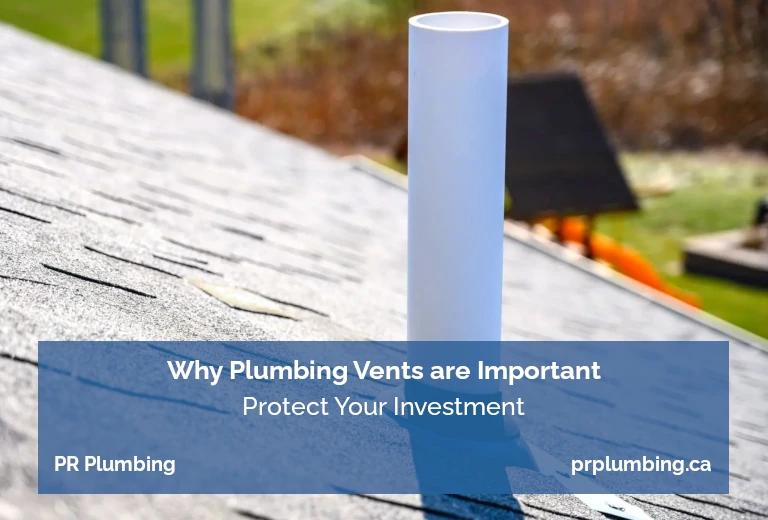When we think about plumbing, we usually picture pipes carrying water in and waste out. There’s another part of the system that rarely gets any attention, but plumbing vents are just as important.
These vents don’t carry water at all. They carry air. Without them, your drainage system wouldn’t work the way it should. They’re hidden on rooftops and inside walls, quietly making sure your home runs smoothly.
So, let’s look at what they are, why they matter, and how to tell if yours might be causing problems.
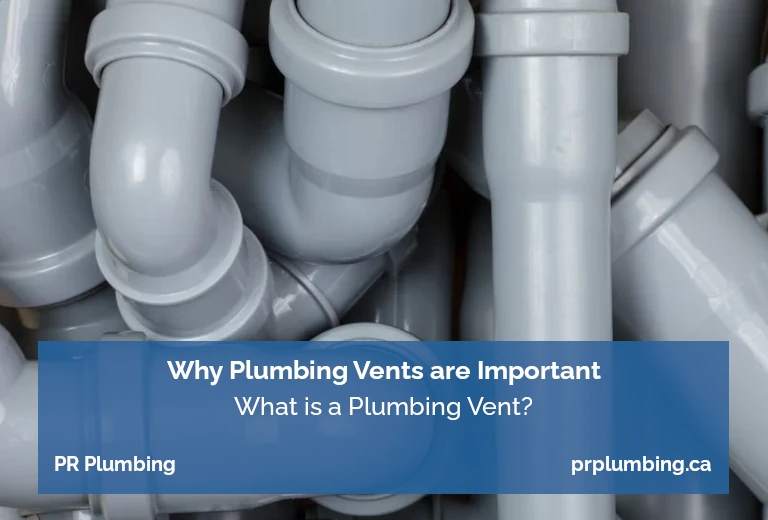
What is a Plumbing Vent?
Sometimes also called a vent stack or an air vent, it is a vertical pipe that extends from your drainage pipes to the outdoors, usually up through your roof. Its job isn’t to carry water, but to:
- Equalize air pressure in the plumbing system
- Let sewer gasses escape safely outside instead of inside your home
- Keep water flowing freely through the drains by preventing vacuums from forming
Think of it like the hole in a juice box straw. Without that tiny vent, the liquid won’t flow properly. Plumbing works the same. Without the vent, draining water would gurgle, slow down, or stop entirely.
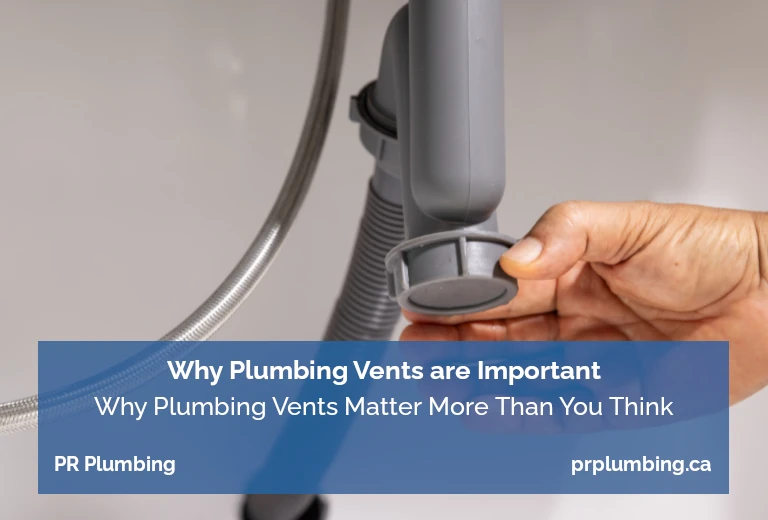
Why Plumbing Vents Matter More Than You Think
These vents are easy to overlook because you don’t interact with them every day. But, if it isn’t working properly, you’ll definitely notice. Here’s why they are so important:
1- Smooth Drainage
Properly vented drains let waste water flow efficiently. Without venting, pipes can become airlocked, leading to slow drains or repeated clogs.
2- Odour Control
Sewer gasses smell awful and can even be dangerous. Vents direct those gasses outside, keeping your home safe and comfortable.
3- Protecting Water Traps
Every sink, toilet, and shower has a P-trap filled with water that blocks sewer gasses from entering your home. Without a vent, drainage water could siphon that tap dry, leaving you with nasty odours.
4- Protecting Fixtures and Pipes
Pressure fluctuations put unnecessary strain on your pipes and appliances. Good venting helps balance pressure and reduce wear over time.
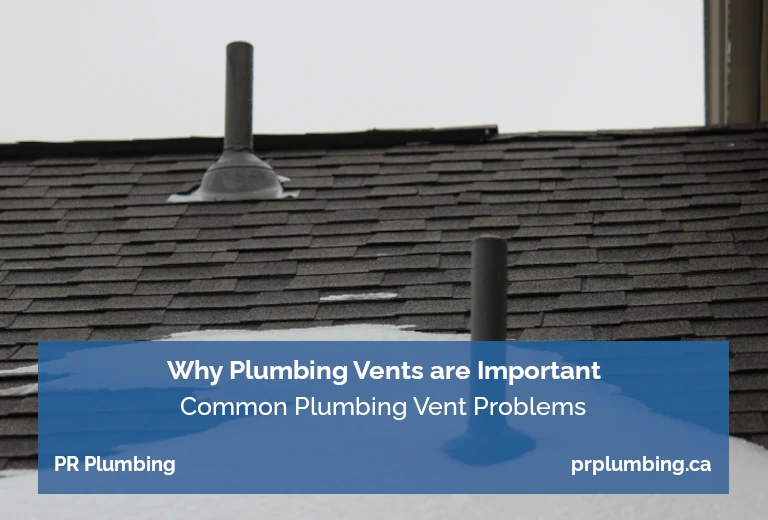
Common Plumbing Vent Problems
The vents are usually out of sight, and out of mind, but when they go wrong, you’ll notice symptoms inside your home. Here are a few common issues:
- Blockages: Leaves, debris, or even small animals can block roof vents. This creates pressure problems that show up as gurgling drains, foul smells, or slow water flow.
- Leaks or Cracks: Vents run through walls and attics. If they crack or separate, gasses could leak indoors instead of venting outside.
- Improper Installation: In older or DIY plumbing, vents may not meet code requirements. Too few vents, or vents in the wrong place, can cause ongoing drainage issues.
- Winter Freezing: In colder parts of Ontario, vents can sometimes frost over, especially on rarely used fixtures, restricting airflow.
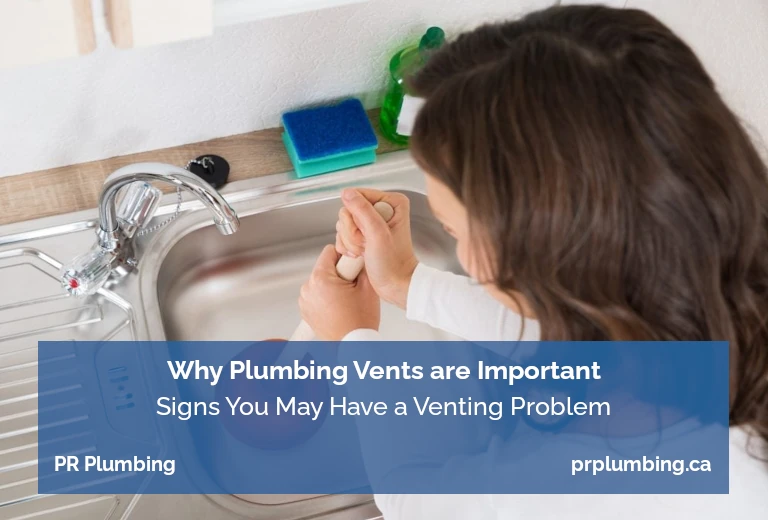
Signs You May Have a Venting Problem
Because vents are hidden, it’s not always obvious they’re the culprit. But, here are a few warning signs:
- Gurgling sounds when water drains
- Foul sewer odours coming from sinks and tubs
- Slow draining fixtures even after cleaning the trap
- Toilets that struggle to flush
- Unexplained recurring clogs in multiple locations
If you notice more than one of these issues, the vent system could be to blame.
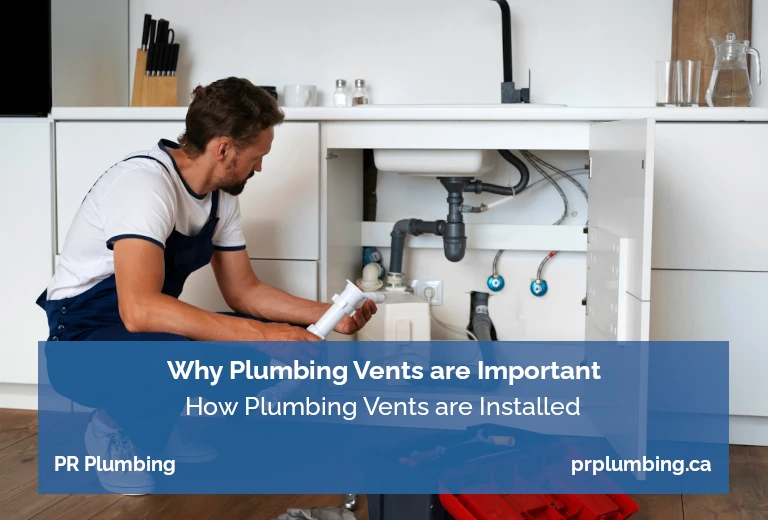
How Plumbing Vents are Installed
In most homes, vent stacks rise vertically from the main drain line and exit through the roof. Secondary vents may branch off from sinks or tubs and connect to the main stack.
Key points about installations:
- Roof exit point: Vents must be tall enough above the roofline to prevent snow, water, or debris from blocking them.
- Trap protection: Every fixture needs venting within a specific distance (varies by local code).
- Proper slope: Just like drain pipes, vents need the correct slope to prevent condensation buildup.
Because venting rules are detailed and tied to building codes, it’s a job best left to professional plumbers rather than DIY.
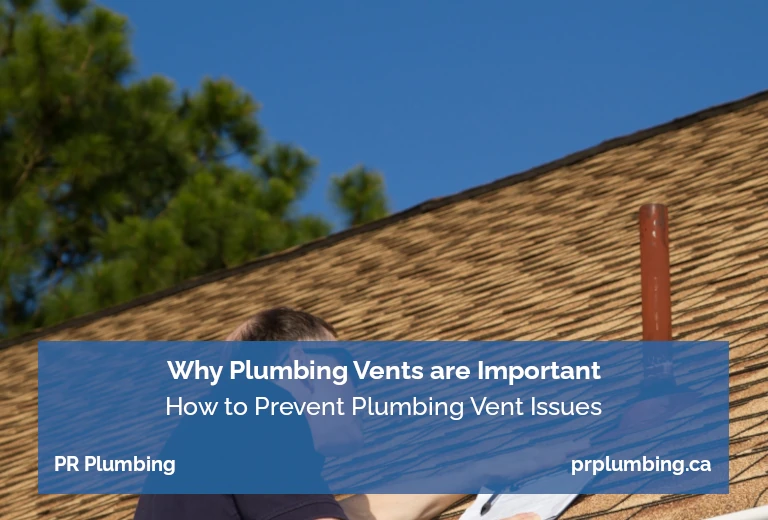
How to Prevent Plumbing Vent Issues
While most vent problems require a plumber, there are things homeowners can do to keep them working properly.
- Check your roof vents seasonally: Look for leaves, bird nests, or ice buildup.
- Be cautious with renovations: Adding a new bathroom or moving a sink may require new venting. Cutting corners here leads to big problems later.
- Schedule inspections: If you live in an older home in Durham or the GTA, a plumbing inspection can confirm that your vents still meet code and are functioning properly.
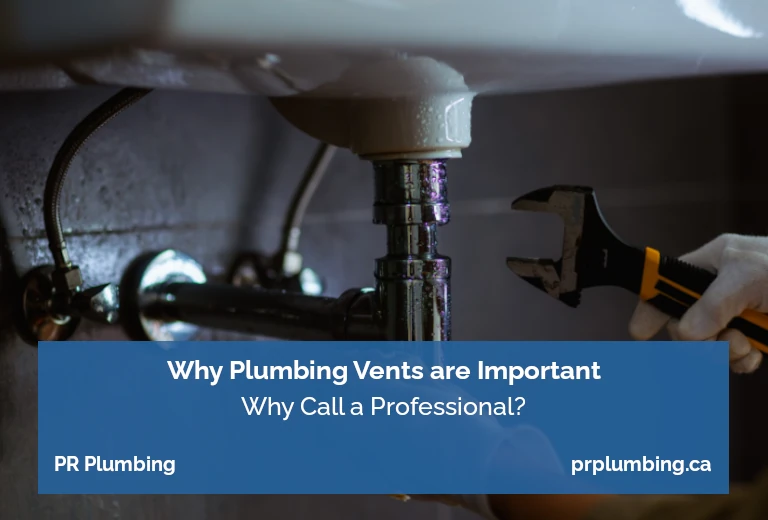
Why Call a Professional?
Because vents are tucked away in walls, ceilings, and roofs, troubleshooting them isn’t easy. A licensed plumber can:
- Perform smoke tests to find leaks or blockages
- Verify that your venting meets Ontario building code
- Clear obstructions safely without damaging your roof or pipes
- Recommend updates if you’re renovating or adding new fixtures
For peace of mind and safe, efficient plumbing, a pro is the way to go.
If you’re experiencing slow drains, strange gurgling, or persistent odours, don’t ignore the possibility of vent problems. Book a plumbing inspection today and let our licensed professionals ensure your home’s drainage system is working the way it should.
Call us at (905) 429-9622 or visit prplumbing.ca to schedule your appointment.
